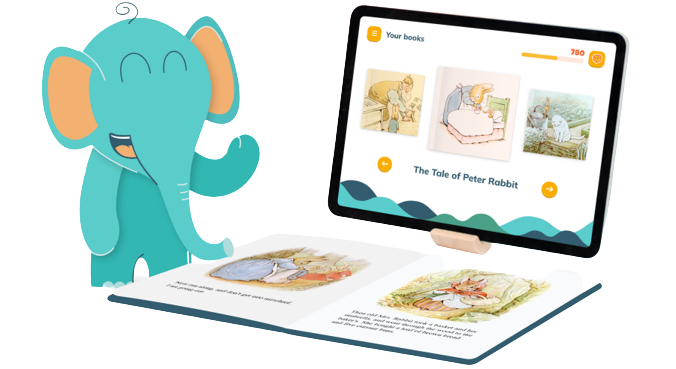The Most Important Thing You Can Do to Boost Your First-Grader’s Reading This Year
Start these at-home reading habits now to maximize your first-grader's reading growth for the entire year

Start these at-home reading habits now to maximize your first-grader's reading growth for the entire year

This is the transformative year where they go from sounding out one word at a time to being able to read a whole sentence like a pro. Many will even be starting chapter books by the end of the year!
At least, that’s the goal - and it can feel daunting for first-graders and their parents alike. As a literacy specialist, I have worked with many families during the transition from Kindergarten to 1st Grade. I always recommend they focus on this one key action to maximize reading growth:
Before you click away grumbling to yourself, “thanks for nothing, a reading routine is impossible,” I promise you that there is a routine that works for you and your family, and I have all the tricks you need to set it up.
We all start off the school year with the best intentions, but it’s hard to keep up that level of enthusiasm for long. Instead, let’s shift our mindset when we think of “reading routine.”
The truth is, the only “bad” reading routine is one you can’t keep up with or that your child hates. So take some time to experiment with what works best. Here are some ideas to try:

It’s amazing how quickly a first-grader’s calendar fills up, and if you’ve got multiple children, you probably spend so much time on the go, that it feels like there’s no time left for reading.
But one of the amazing things about books is: they’re highly portable. Bring some along to turn everyday family activities like these into opportunities to sneak in some reading practice:

I know there are about a dozen follow-up questions that can come from this suggestion, so here’s my other go-to advice for turning books into travel companions:

It’s a mixed blessing when your child falls in love with a book. On the one hand, they’re learning to love reading! On the other, you have to help them read it multiple times a day.
BUT! Re-reading is one of the best activities to improve a child’s fluency1, comprehension2, and confidence. Here’s why:
So lean into the re-read… but go ahead and outsource some of those repeated readings to the Ello app to maintain your sanity.

Whether it’s winter break or an annoying virus that throws things off, at some point this school year, you’re going to suddenly realize that reading at home isn’t really happening as much as you’d like - or maybe even at all.
When it comes to reading routines, two rules of thumb apply:
But now that you know what to expect, you can overcome it. So when (not if) your reading routine stops working, the most helpful thing you can do for your child is to begin again. Maybe go back to the drawing board and make a few tweaks to the old routine.
You're committed to supporting your child's reading growth this year, but who's supporting you? We've developed Ello to support families in creating a reading routine that gets results.
Each month your child receives five real books curated to maximize their interest and growth. Your child opens the app, and Ello listens to them read aloud, teaches them, motivates them, and builds their reading independence.
Give yourself and your child the right tools to help make your reading routine simple, low-conflict, and effective from the get-go.
%20(1).png)
1 Álvarez-Cañizo, M., Suárez-Coalla, P., and Cuetos, F. (2015). The role of reading fluency in children's text comprehension. Front. Psychol. 6:1810. doi: 10.3389/fpsyg.2015.01810.
2 Meyer, M. S., & Felton, R. H. (1999). Repeated reading to enhance fluency: Old approaches and new directions. Annals of Dyslexia, 49, 283–306.